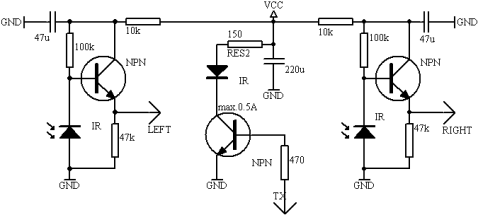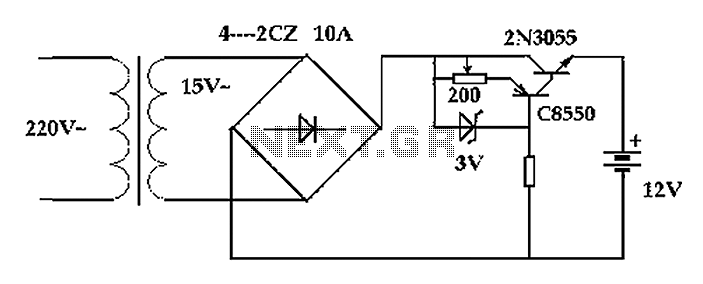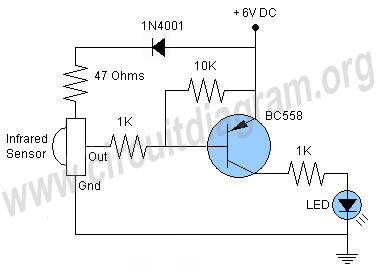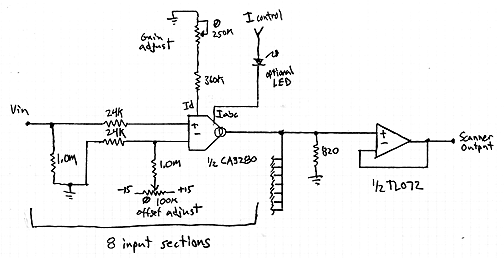
74123 IC Infrared Gate Sensor Circuit

This circuit functions to monitor the duration of occupancy in a toilet, activating an alert if the time spent exceeds a predefined limit. The components involved include a resistor, integrated circuit (IC), capacitor, and transistor.
The occupancy monitoring circuit is designed to ensure privacy and safety in public restrooms by tracking the time a user remains inside. It typically employs a timer mechanism that is initiated when the door is closed. The circuit can be built around a microcontroller or a simple timer IC, which counts the elapsed time.
A resistor is used to set the time constant in conjunction with a capacitor, creating a delay that determines the threshold for occupancy. The capacitor charges through the resistor, and once it reaches a certain voltage, it triggers the microcontroller or timer IC to activate an alert system. This alert can be visualized through an LED indicator or an audible alarm, notifying others that the toilet has been occupied for an extended period.
The transistor acts as a switching element, allowing the microcontroller to control higher power components, such as the alert system or an external display. By integrating these components, the circuit effectively monitors toilet usage and enhances user experience while maintaining necessary privacy standards.
Overall, this circuit is a practical solution for managing occupancy in facilities where time management and user awareness are critical.Function: applied in a toilet to keep track of that someone is inside exceeding a certain amount of time. Component: Resistor, IC, Capacitor, Transistor, .. 🔗 External reference
The occupancy monitoring circuit is designed to ensure privacy and safety in public restrooms by tracking the time a user remains inside. It typically employs a timer mechanism that is initiated when the door is closed. The circuit can be built around a microcontroller or a simple timer IC, which counts the elapsed time.
A resistor is used to set the time constant in conjunction with a capacitor, creating a delay that determines the threshold for occupancy. The capacitor charges through the resistor, and once it reaches a certain voltage, it triggers the microcontroller or timer IC to activate an alert system. This alert can be visualized through an LED indicator or an audible alarm, notifying others that the toilet has been occupied for an extended period.
The transistor acts as a switching element, allowing the microcontroller to control higher power components, such as the alert system or an external display. By integrating these components, the circuit effectively monitors toilet usage and enhances user experience while maintaining necessary privacy standards.
Overall, this circuit is a practical solution for managing occupancy in facilities where time management and user awareness are critical.Function: applied in a toilet to keep track of that someone is inside exceeding a certain amount of time. Component: Resistor, IC, Capacitor, Transistor, .. 🔗 External reference





